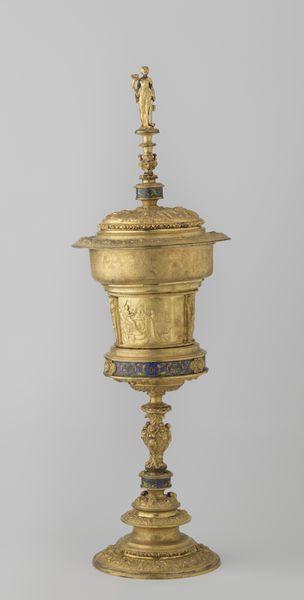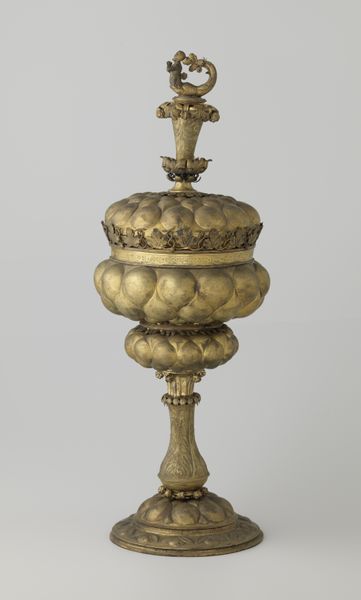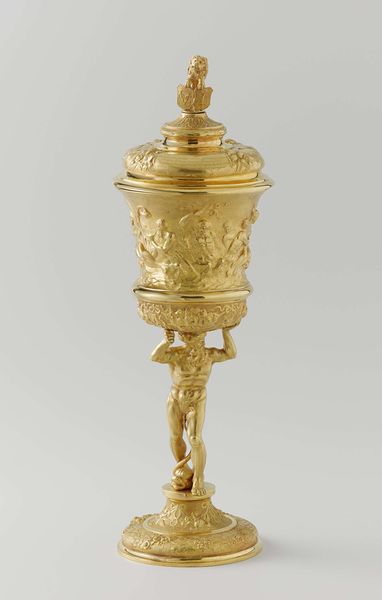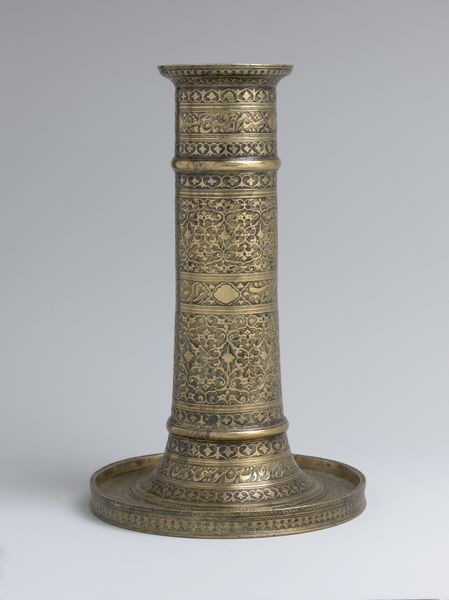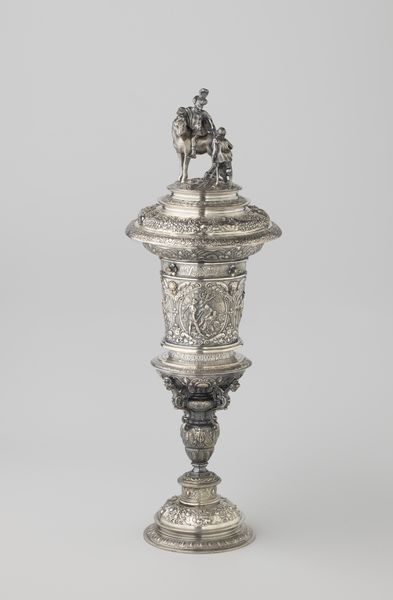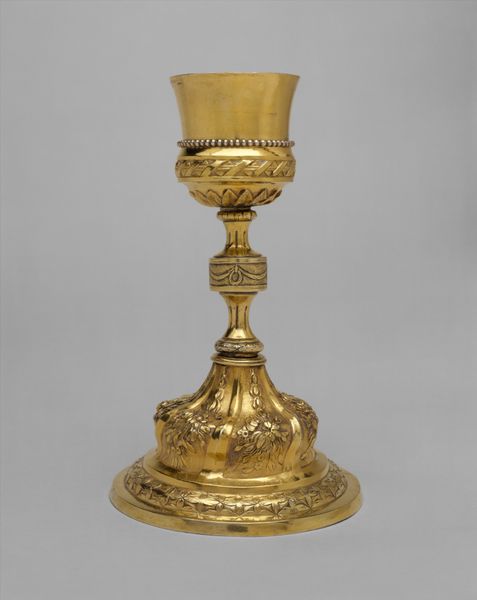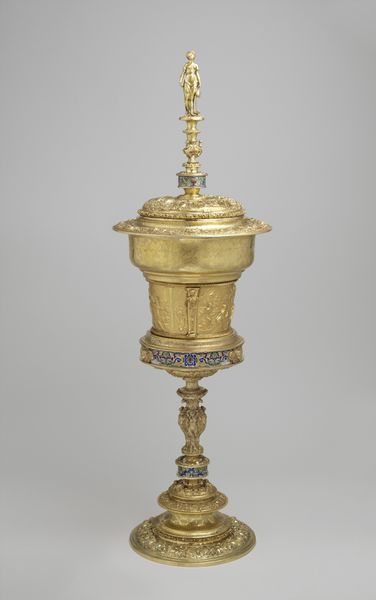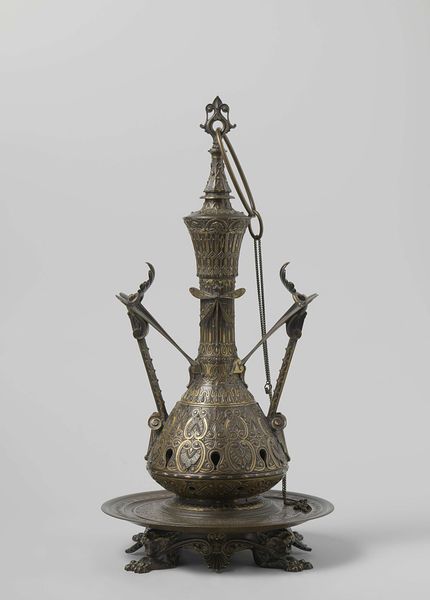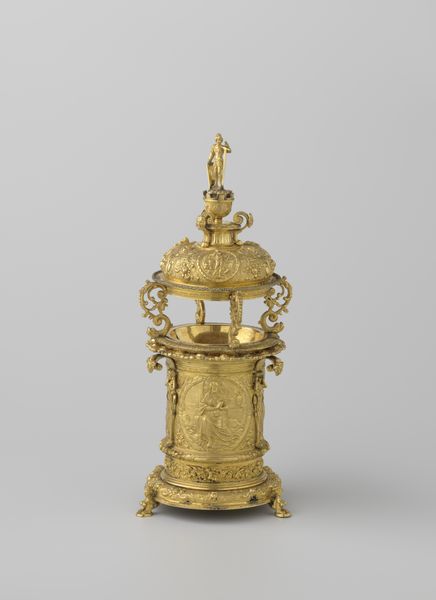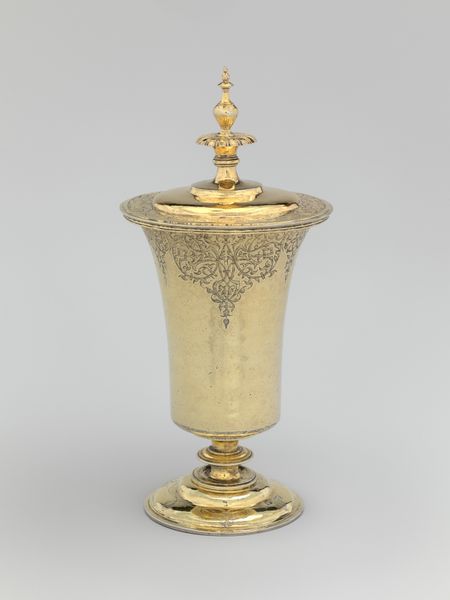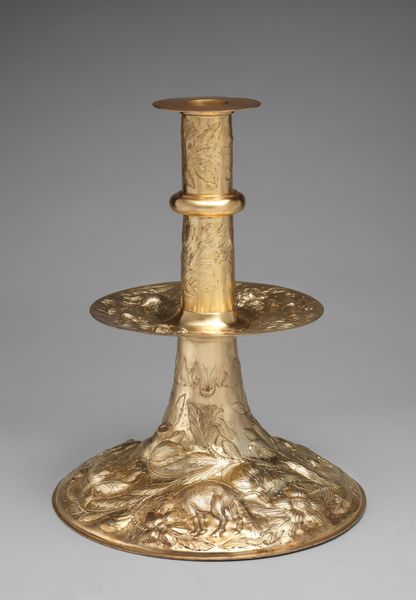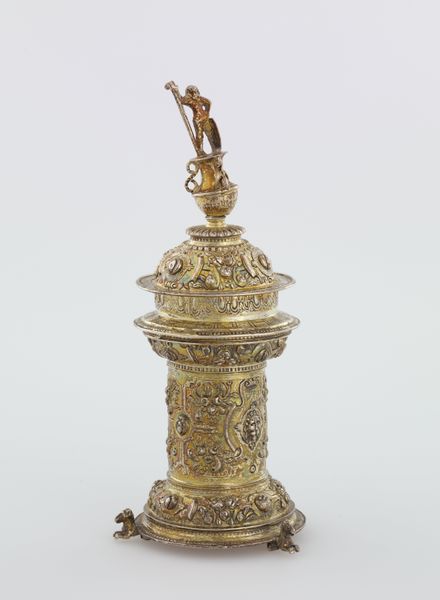
carving, silver, metal, gold, relief, sculpture, wood
#
medieval
#
carving
#
silver
#
metal
#
gold
#
relief
#
sculpture
#
wood
#
decorative-art
#
medieval-art
Dimensions: Overall: 9 1/2 x 2 9/16 x 3 1/16 in. (24.1 x 6.4 x 7.8 cm) vessel (a) only: 6 1/8 x 2 9/16 x 3 1/16 in. (15.6 x 6.4 x 7.8 cm) Lid (b) only: 3 1/4 x diam. 2 13/16 in. (8.3 x diam. 7.2 cm)
Copyright: Public Domain
Curator: Well, isn’t that something? My first impression is almost fairytale-like – dark wood contrasted against all that glimmering silver. Editor: Indeed! What we're observing here is a "Beaker," crafted sometime between 1475 and 1485. It's credited to the artist Hans Greiff, and it resides here at the Metropolitan Museum of Art. Consider the sheer confluence of materials: silver, gold, wood… Curator: It gives off such a tactile impression. All those materials – the cool smoothness of the metal, the dark and seemingly rough carved wood. Visually intriguing. I am especially drawn to those rams, they give a sturdy, steadfast appeal. The ram is a symbol of determination, it lends gravity to this drinking vessel, don't you agree? Editor: Absolutely. And if we dig a bit deeper into iconographic history, you find that animals adorning functional objects aren't purely decorative. They invoke properties; protection perhaps, fertility, depending on the context. Silver itself in medieval art signified purity and wealth; placing liquid within this vessel suggests rituals of purification and importance. Curator: And who might have commissioned such a piece? Objects like this speak volumes about social hierarchies, don't they? A display of wealth, of course, but also a clear statement about power and prestige. Think of the goldsmiths who belonged to guilds, effectively controlling production and dictating access to this echelon of craftsmanship. Editor: Yes, guilds exerted considerable influence on visual language. The floral relief around the base, the miniature figure atop the lid, even the shaping of the wood—they all served as a kind of visual vocabulary understood by its intended audience. Even the location, a prominent merchant city at that time, might signify something beyond simple utility for drinking vessels. A message perhaps? Curator: Undoubtedly! To me it stands testament to art’s intrinsic link to societal values; beyond aesthetics. Editor: It prompts contemplation about visual symbols and their emotional weight – all in something as humble as a beaker.
Comments
No comments
Be the first to comment and join the conversation on the ultimate creative platform.
